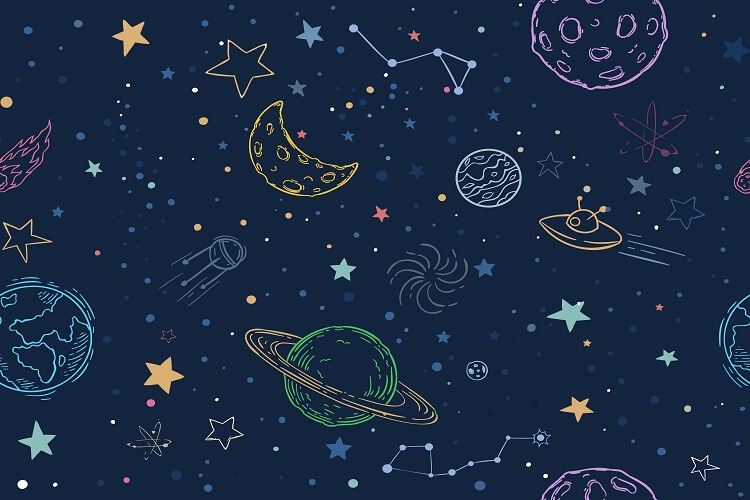People have fantasised about leaving Earth and travelling to other worlds for millennia. The Soviet Union then took the first little step into the universe in 1957, when it launched Sputnik, a small satellite. The Space Age had officially begun.
The United States and the Soviet Union dominated early universe efforts. Europe and Japan, on the other hand, learnt how to develop their satellites and rockets over time.
South Korea, India, China, Israel, and Brazil are among the countries building their space industry today. Let’s read about how can space exploration facts benefit kids and also there are some exciting facts for you and your kids to know. Read them below.
Learning courses for your kids! Get free trial here
Also Read: Space Quiz for Kids: A Wide Range of Space Quiz and Answers with Space Facts
Space Exploration for Kids
Unmanned probes have been dispatched to all of the planets in the Solar System, as well as many asteroids, satellites, and comets, over the previous 60 years. Soft landings have occurred on a half-dozen worlds, and rovers have driven across the Moon and Mars’ surfaces. A fleet of spacecraft has also investigated the Sun in remarkable detail.
Many space observatories have been launched to study the distant Universe, such as the Hubble Space Telescope. They’ve returned with some incredible photos taken in visible light. Radio, infrared, ultraviolet, X-rays, and gamma rays are all wavelengths that are invisible to human vision and can be used to examine stars and galaxies. The avalanche of discoveries has altered our perceptions of the universe.
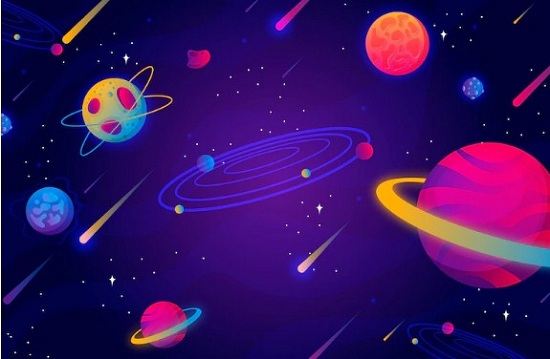
Benefits of Space Exploration
Earth is the only known planet in the solar system to have water (though Jupiter’s moon Europa may have frozen water, which has yet to be confirmed). As a result, Earth is the only planet that has life. Because organisms such as you, your family, and your dog or cat cannot survive without water, we must preserve the supplies we do have.
This means simply using what you need and keeping it as clean as possible, both of which can help your children develop an interest in the solar system. They will be more eager to conserve the resources on their planet if they understand how unique and vital it is to the ecology. This information could help you reduce your family’s carbon footprint.
Teaching your children about the other planets in the solar system will enable them to compare and contrast them to their planet. You can begin with the following eight:
Also Read: Space Quiz Questions for Kids: Here’ the Fun way to Enhance Knowledge
Mercury
The planet that is nearest to our sun is also the smallest in our solar system, measuring only slightly larger than the Moon. With long days and short years, its rotation and orbit are radically different from ours.
Venus
Under Venus’s heavy clouds, which are so dense that the surface is far hotter than humanity could live in, a powerful greenhouse effect occurs. This is an excellent approach to discussing greenhouse gases and their long-term damaging effects on the Earth.
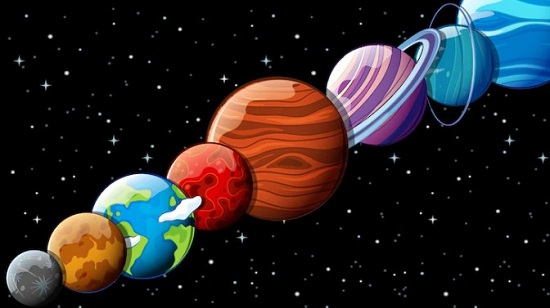
Mars
Mars, your closest universe neighbour, has the solar system’s highest mountain. Olympus Mons is 16 miles tall, roughly three times the height of Mount Everest.
Jupiter
This orange and red planet has dozens of moons and is the largest of the planets. The large red spot that most children recognise is a massive, gaseous storm that has been raging for hundreds of years.
Also Read: Amazing & Interesting Facts about Space: Facts Every Kid Should Know
Saturn
Unlike Earth, this massive gas giant has no hard surface. What is the significance of this to people, and how can you safeguard the ground you walk on? Of course, no discussion of Saturn would be complete without mentioning its rings.
Uranus
Uranus rotates sideways, unlike all other planets, therefore it “rolls” rather than rotates. The planet has 20 year-long seasons as a result of this strange movement.
Neptune
The winds on this blue planet are nine times stronger than those on Earth. Have you discussed the causes of wind with your children?
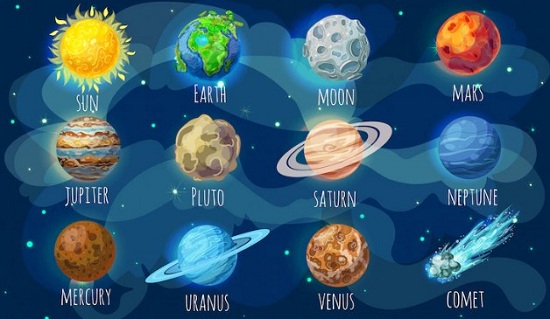
What is Space Exploration?
Sending people or equipment into space or into the universe to visit other planets and objects, things in-universe is known as universe exploration. For hundreds of years, mankind has dreamed of visiting the heavens, but it wasn’t until 1969 that the first person walked on the Moon.
Hundreds of satellites have been launched into orbit around the globe into the universe since the first human stepped on the Moon, and hundreds of people have been into the universe on a variety of spacecraft. We’ve also dispatched robots to study objects farther out in the Solar System.
Fun Facts
#Yuri Gagarin of the Soviet Union was the first person in the universe, to travel into orbit around the Earth in 1961.
#Neil Armstrong, an American, was the first person to walk on the Moon in 1969.
#Apart from Earth, the Moon is the only spot in space where people have stepped foot.
#Astronauts are people who fly into the universe. To keep healthy while in the universe, they must be very careful about what they eat and how much exercise they get.
#To enter into orbit around the Earth, a spaceship must travel at 11,000 miles per hour.
#Huge rockets are used to launch spacecraft into orbit.
Also Read: Fun Facts About Space For Kids: Explore the Unexplored Space for Kids at the Right Place!
Some More Fun Facts
#The Shuttle was the most well-known type of spaceship. There were five Orbit #Shuttles and one prototype, and they flew 135 flights into space between them.
#Only 535 people have ever travelled into orbit, and only 12 have ever walked on the Moon, out of billions of people on the planet.
#The International Space Station is the world’s largest space station. It can accommodate a six-person crew.
#NASA’s ‘Curiosity’ lander landed on Mars in 2012 to see whether it might detect evidence of any organisms or plants that had ever lived there.
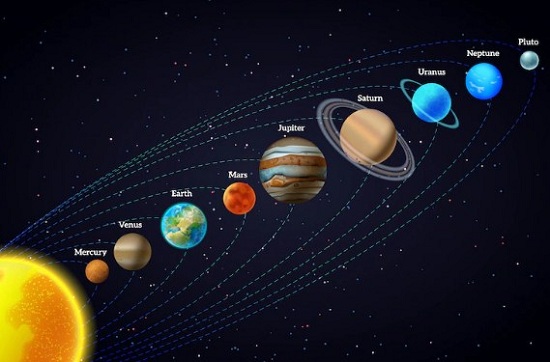
Words to Know
#Astronaut: A person who has travelled into the universe is known as an astronaut.
#Curiosity: NASA’s Curiosity rover was launched to Mars to look for signs of life.
#ESA: ESA is the European Space Agency, which is made up of all European countries working together on space projects.
#NASA: NASA stands for the North American Space Agency, which is a US-based organisation that studies and explores space.
#Orbit: When something enters orbit, it is high enough to continue orbiting the Earth rather than falling back to Earth.
Conclusion
Everyone, especially your children, may develop a better understanding of the fragility of the Earth by learning about the solar system. Knowing why your planet is unique and how to safeguard it helps to ensure that the world is safe and healthy for future generations to inhabit. Plus, teaching your children about space is entertaining and participatory!
Also Read: Unbelievable Facts about Outer Space for Kids: Facts Every Kid Must Know


